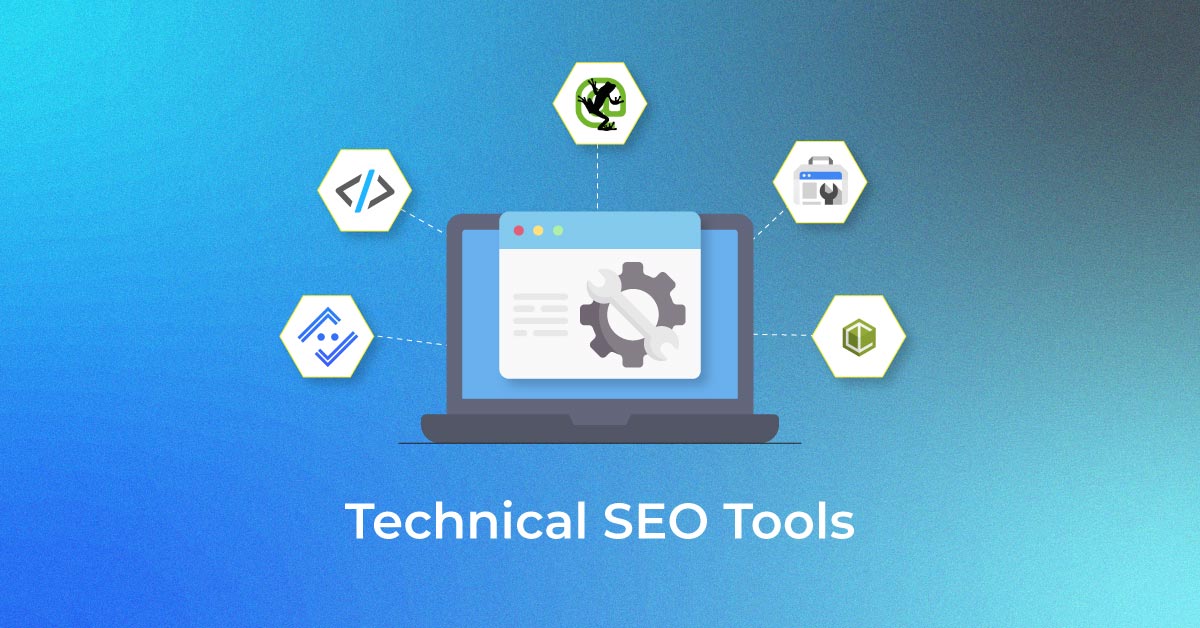
In today’s competitive digital landscape, getting found online isn’t enough — your website also needs to be fast, accessible, secure, and user-friendly. While keyword optimization and content marketing are essential for visibility, Technical SEO is the backbone that ensures search engines can effectively crawl, index, and understand your site.
Think of your website as a house. You might decorate it beautifully (content SEO), but if the foundation is weak — cracks in the walls, leaky pipes, unstable wiring — the whole structure is at risk. Technical SEO services fix and strengthen that foundation so everything else works better.
A slow site, broken links, poor mobile usability, or missing security protocols can kill your search engine ranking no matter how great your content is. That’s why businesses — from startups to large enterprises — work with a technical SEO agency to keep their websites healthy, optimized, and aligned with Google’s constantly evolving algorithms.
What is Technical SEO?
Technical SEO refers to the process of optimizing your website’s infrastructure so that search engines like Google can easily crawl, index, and display your pages in search results.
It goes beyond content and keywords to focus on:
- Website performance (page speed, Core Web Vitals)
- Mobile optimization (responsive design, mobile-first indexing)
- Secure connections (HTTPS implementation)
- Site architecture (logical URL structure, internal links)
- Structured data (Schema markup for rich snippets)
In simple terms: Technical SEO is the foundation that allows your content SEO and off page SEO efforts to work effectively.
Why Is Technical SEO Important?
Without a solid technical foundation, search engines may struggle to understand, index, or even find your site. This can lead to poor rankings, reduced traffic, and lost revenue.
Here’s why technical SEO matters:
1. Better Crawlability & Indexing
A clean site structure, optimized robots.txt file, and accurate XML sitemap make it easy for search engines to discover all your important pages — no wasted crawl budget.
2. Improved User Experience (UX)
Fast-loading, mobile-friendly, and secure websites keep visitors engaged longer, reducing bounce rates and increasing conversions.
3. Higher Search Visibility
Fixing broken links, duplicate content, and improper canonical tags ensures your site ranks for the right search queries.
4. Stronger ROI from SEO Investment
Every on-page or off page SEO strategy works better when the technical foundation is strong.
5. Future-Proofing Against Algorithm Changes
Google increasingly rewards sites with strong usability and performance signals. Technical SEO keeps you aligned with evolving ranking factors.
Core Web Vitals: A Must for SEO Success
One of the most important aspects of technical SEO basics is optimizing Core Web Vitals — key performance metrics that directly impact your Google ranking:
- Largest Contentful Paint (LCP) – Measures how quickly the main content loads. Aim for under 2.5 seconds.
- First Input Delay (FID) – Measures interactivity. Aim for less than 100 ms.
- Cumulative Layout Shift (CLS) – Measures visual stability. Keep it under 0.1.
To check these metrics, use Google PageSpeed Insights, Lighthouse, or GTmetrix. A technical SEO checklist should always include Core Web Vitals optimization.
How to Improve Core Web Vitals:
- Compress and lazy-load images
- Minimize CSS and JavaScript files
- Use a reliable hosting provider and Content Delivery Network (CDN)
- Preload important fonts and resources
If Core Web Vitals are poor, website speed suffers — and so will your search ranking.
Technical SEO Basics: The Essential Building Blocks
A strong technical SEO strategy starts with the basics:
- Website Speed – Use tools like Google PageSpeed Insights to monitor and improve load times.
- Mobile Optimization – Ensure your site is responsive and passes Google’s mobile-friendly test.
- Internal Links – Connect related pages to distribute link equity and help search engines understand site structure.
- Secure HTTPS – Encrypt data and improve trust with an SSL certificate.
- Crawlability & Indexing – Use robots.txt, XML sitemaps, and noindex tags appropriately.
Types of Technical SEO
- Website Architecture & Structure
- Logical URL structure
- Organized navigation
- Optimized internal links
- Crawlability & Indexing
- Robots.txt optimization
- Fixing crawl errors
- Managing duplicate content
- Page Speed Optimization
- Image compression & lazy loading
- Minimize CSS/JS
- Fast hosting & CDN
For a step-by-step guide, check out our article: Don’t Let a Slow Website Kill Your SEO – Here’s How to Fix It.
- Mobile Optimization
- Responsive design
- Mobile-first indexing
- Security Enhancements
- HTTPS implementation
- SSL certificates
- Structured Data Markup
- Schema.org implementation for rich results
- Fixing Technical Errors
- 404 errors, broken links, redirect issues
A technical SEO agency can handle these tasks efficiently using professional SEO tools and experience.
How Can You Improve Your Technical SEO?
Improving technical SEO involves auditing your site for issues and making targeted optimizations. Here’s a structured approach:
- Run a Technical SEO Audit
- Use tools like Google Search Console, Ahrefs, SEMrush, or Screaming Frog to find crawl errors, indexing issues, and broken links.
- Optimize Site Speed
- Compress images, enable browser caching, remove render-blocking scripts, and use a CDN (Content Delivery Network).
- Ensure Mobile-Friendliness
- Use responsive design so your site looks and works well on all devices. Google’s Mobile-Friendly Test can help you spot issues.
- Improve Crawlability
- Create an XML sitemap, optimize your robots.txt file, and maintain clean, logical site architecture.
- Fix Duplicate Content Issues
- Implement canonical tags and avoid thin, low-value duplicate pages.
- Secure Your Website
- Use HTTPS with a valid SSL certificate to protect user data and improve trust signals.
- Implement Structured Data
- Add schema markup to help search engines understand your content and improve SERP features (rich snippets).
- Monitor & Maintain
- Technical SEO is ongoing—schedule regular audits to fix new issues and adapt to algorithm changes.
Technical SEO vs On-Page SEO
| Aspect | Technical SEO | On-Page SEO |
|---|---|---|
| Focus | Site infrastructure, speed, crawlability, indexing | Content, keywords, headings, internal links |
| Goal | Make site accessible and understandable to search engines | Make content relevant and valuable for users |
| Example | Fixing broken links, HTTPS setup | Optimizing blog titles, adding target keywords |
Both are essential — technical SEO ensures your site is found, while on-page SEO ensures it ranks well.
How Technical SEO Supports SEO Success
Technical SEO works hand-in-hand with:
- Content SEO – Great content needs a technically sound home.
- Off Page SEO – Backlinks are wasted if your site is slow or broken.
By addressing both, you create a balanced, high-performing SEO strategy.
Technical SEO Tools You Should Use
Using the right SEO tools can help you diagnose and fix technical issues efficiently. Popular options include:
- Google Search Console – Crawl errors, indexing issues, and performance data
- Google Analytics 4 – User behavior, traffic sources, and engagement metrics
- Screaming Frog SEO Spider – Detailed site crawling and error detection
- Ahrefs / SEMrush – Backlink analysis, keyword rankings, site audits
- GTmetrix / PageSpeed Insights – Page speed and performance reports
If you’re looking for an affordable SEO package , many agencies include these tools in their service.
How to Perform a Technical SEO Audit
A technical SEO audit is a detailed checkup of your website’s health. Here’s the process:
- Check Crawlability Use Search Console or Screaming Frog to ensure all important pages are crawlable.
- Test Site Speed Run PageSpeed Insights and optimize slow-loading resources.
- Mobile-Friendly Test Verify responsive design and usability on multiple devices.
- Fix Indexing Issues Resolve duplicate content, noindex tags, and missing pages.
- Implement Structured Data Add schema markup to improve search appearance.
- Security Audit Ensure HTTPS is active and functioning properly.
You can request a Free Technical SEO Audit from a reputable best SEO company to get a full breakdown without any upfront cost.
Advanced Technical SEO Strategies
Once you’ve mastered the basics, advanced tactics can help you achieve higher ranking and SEO success:
- Core Web Vitals Optimization (LCP, FID, CLS)
- International SEO with hreflang tags
- Log File Analysis to understand bot behavior
- Advanced Schema Implementations for FAQs, reviews, and events
- JavaScript SEO Optimization for dynamic websites
Technical SEO Checklist
Here’s a simple technical SEO checklist for better search engine ranking:
- Run a technical SEO audit every 3–6 months
- Fix broken links and 404 errors
- Optimize images and enable lazy loading
- Use HTTPS site-wide
- Improve Core Web Vitals with Google PageSpeed Insights
- Check internal links for relevance and hierarchy
- Submit and update your XML sitemap in Google Search Console
FAQ:
1. Why Is Technical SEO Important?
Because without it, search engines can’t properly read, index, or rank your site — no matter how great your content is.
2.How Can You Improve Your Technical SEO?
Run regular audits, improve site speed, fix broken links, and implement structured data.
3.Why Use Technical SEO Strategies?
They future-proof your website, improve rankings, and boost user satisfaction — all leading to better conversions.
4.What Are the Most Important Technical SEO Factors?
Page speed, mobile optimization, secure HTTPS connection, proper indexing, and error-free site architecture.
5. What are some common technical SEO issues?
Some of the most common technical SEO problems include:
- Slow page speed caused by unoptimized images, excessive scripts, or poor hosting.
- Broken links (404 errors) that disrupt user experience and waste crawl budget.
- Missing or duplicate meta tags that confuse search engines.
- Poor mobile usability , making your site hard to navigate on smartphones.
- Improper indexing where important pages aren’t being crawled.
- Lack of HTTPS security , which reduces trust and rankings.
6. How often should I do technical SEO audits?
A full technical SEO audit should ideally be performed every 3–6 months . However, if your site is large, frequently updated, or in a competitive niche, you may need monthly mini-audits. Also, audits should be done immediately after a website redesign, migration, or major content changes to ensure no technical issues harm your rankings.
7. How can I check for any technical SEO problems on my site?
You can identify technical SEO issues by using tools such as:
- Google Search Console – for indexing errors, mobile usability issues, and Core Web Vitals.
- Screaming Frog SEO Spider – for crawling your entire site and detecting broken links, duplicate content, and missing tags.
- Ahrefs or SEMrush Site Audit – for a comprehensive health score and improvement tips.
- PageSpeed Insights – for load speed and performance optimization advice.
Regular monitoring with these tools will help you fix issues before they hurt your rankings .
Final Thoughts
Technical SEO is not just for developers — it’s for anyone who wants SEO success.
Whether you run a small local shop or a global e-commerce platform, technical SEO services ensure your website works with search engines, not against them.
If you want a fast, secure, and fully optimized site, partner with the Best Pro SEO Agency for expert technical SEO services. Our team specializes in regular audits, Core Web Vitals optimization, and ongoing monitoring to keep your site performing at its peak. The result? Higher rankings, better website performance, and long-term SEO success — all powered by proven strategies from industry experts.





